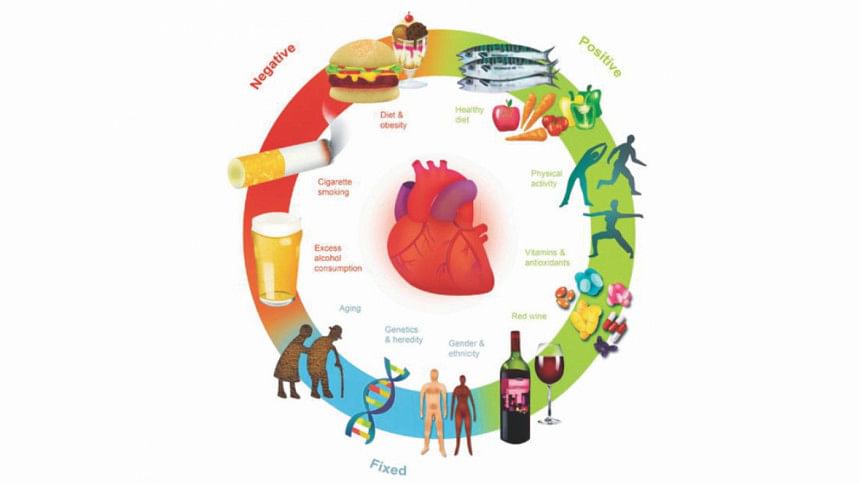Ways to reduce the burden of CVD risk factors

Exposure to known risk factors for cardiovascular diseases (CVD) remains alarmingly common and presents one of the largest barriers to improved global health. Most CVD-related premature deaths are linked to these common risk factors. The vast majority of CVDs is a result of the continuation of preventable behavioural and metabolic risk factors. Globally, CVD prevention emphasises on healthy life behaviours and optimal biologic factors those are called the modifiable cardiovascular risk factors.
Hypertension: Alleviated blood pressure is estimated to be the single largest contributor to the global burden of disease and mortality. The development of hypertension is associated with dietary exposure such as excess intake of salt, saturated fats and alcohol, reduced exercise and inadequate intake of fresh fruit and vegetables. High blood pressure is also positively associated with lack of physical activity and being overweight. There are gaps in awareness, treatment and control of hypertension globally.
Obesity: There has been a global rise in obesity among adults as well as adolescents and children. Overweight is defined as a Body Mass Index (BMI) greater than or equal to 25 kg/m2 and obesity is defined as BMI greater than or equal to 30 kg/m2. The number of people who are overweight and obese is increasing.
Diet: Ideal diet as defined by the American Heart Association involves eating a balanced diet that includes a variety of fruits and vegetables daily, whole grains, fat free and low fat dairy products, fish, legumes, poultry and lean meats and limited intake of salt (sodium chloride <5 gm/day), alcohol (no more than one drink per day for women and two drinks per day for men), saturated fats and cholesterol. Low fruit and high salt consumption are significant contributors to overall cardiovascular disease.
Dyslipidaemia: The excessive level of serum cholesterol contributes to 2.6% of total global Disability adjusted life years (DALY). The awareness, treatment and control of levels for hypercholesterolaemia mirror the suboptimal patterns of poor diet as well as limited access to treatment with effective therapy such as statin medications.
Air pollution: Multiple mechanisms have been considered as the cause for association between air pollution and CVD, including inflammation, autonomic nervous system imbalance, and changes in vascular responsiveness and compliance, altered cardiac structure and promotion of atherosclerosis. Air pollution has now been known to increase preclinical risk factors such as atherosclerosis, endothelial dysfunction and hypertension.
Physical inactivity: Physical inactivity has become a leading risk for CVD globally. There is an increased risk of death associated with physical inactivity contributing to 1.8% of total DALY, much of which appears to be via its contribution to increased body weight and abdominal fat deposition.
Mental illness: The relationship of mental health disorders with CVD is complex, but receiving increased attention as important co-morbid condition. Those with CVD are at a higher risk for developing depression while simultaneously; those with mental disorders are at a greater risk for developing risk factors, as well as CVD. There is evidence for casual association between depression and CVD even after adjustment of traditional CVD risk factors.
The writer is a Consultant at the Cardicare Heart and General Hospital.

 For all latest news, follow The Daily Star's Google News channel.
For all latest news, follow The Daily Star's Google News channel. 



Comments